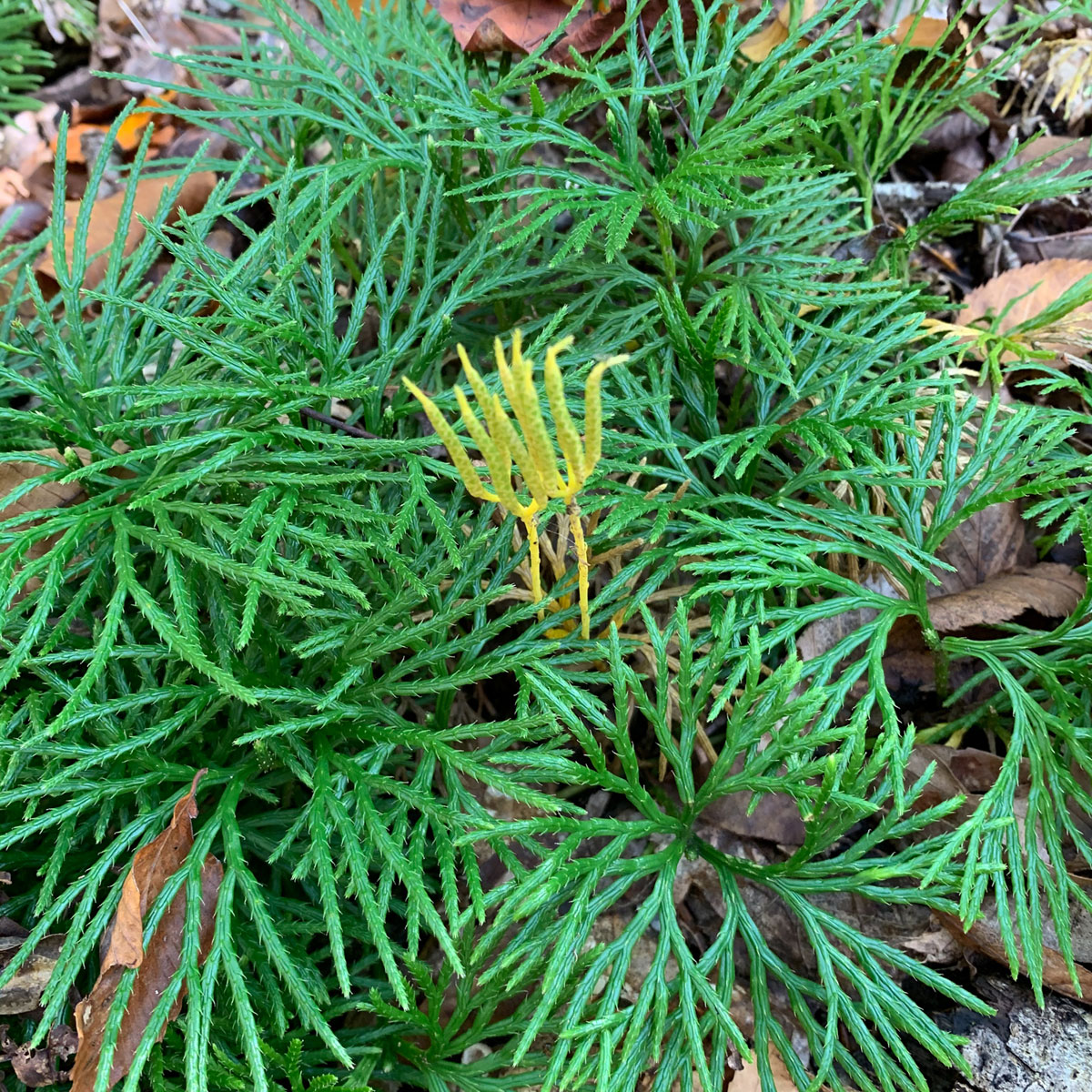From North Carolina Extension Gardener: During the winter, the foliage is bronze-colored. They are known as Grape Ferns because their clustered spores resemble clusters of grapes. The plant has no chlorophyll and is dependent on fungi for nutrients.
Cutleaf Grape Fern and the Rattlesnake Fern are very similar in appearance and have similar habitats. The fronds of the Rattlesnake Fern tend to be thin, non-leathery, and delicate. The fertile frond of the Rattlesnake Fern tends to develop before the sterile frond. The Rattlesnake Fern is deciduous, and the Cutleaf Grape Fern is evergreen.
Alternate Names: Dissected Grape Fern Size: 6-18" tall Family: Ophioglossaceae (Adder's Tongue Family) (!) Habitat: Partial sun to medium shade, moist to dry-mesic conditions, and soil containing loam or sandy loam with decaying organic material. Identification: The fern has a single sterile leaf and typically a single fertile leaf. The leaves join together on the same stalk close to the surface of the ground. When cold winter temperatures occur, the sterile leaf transitions from green to bronze color. The foliage will remain present until it withers early in the spring or summer. The leaflets are typically dissected and have a lacy appearance. The margins may vary, depending on the variety. The plant has no flowers or fruits. From North Carolina Extension Gardener









